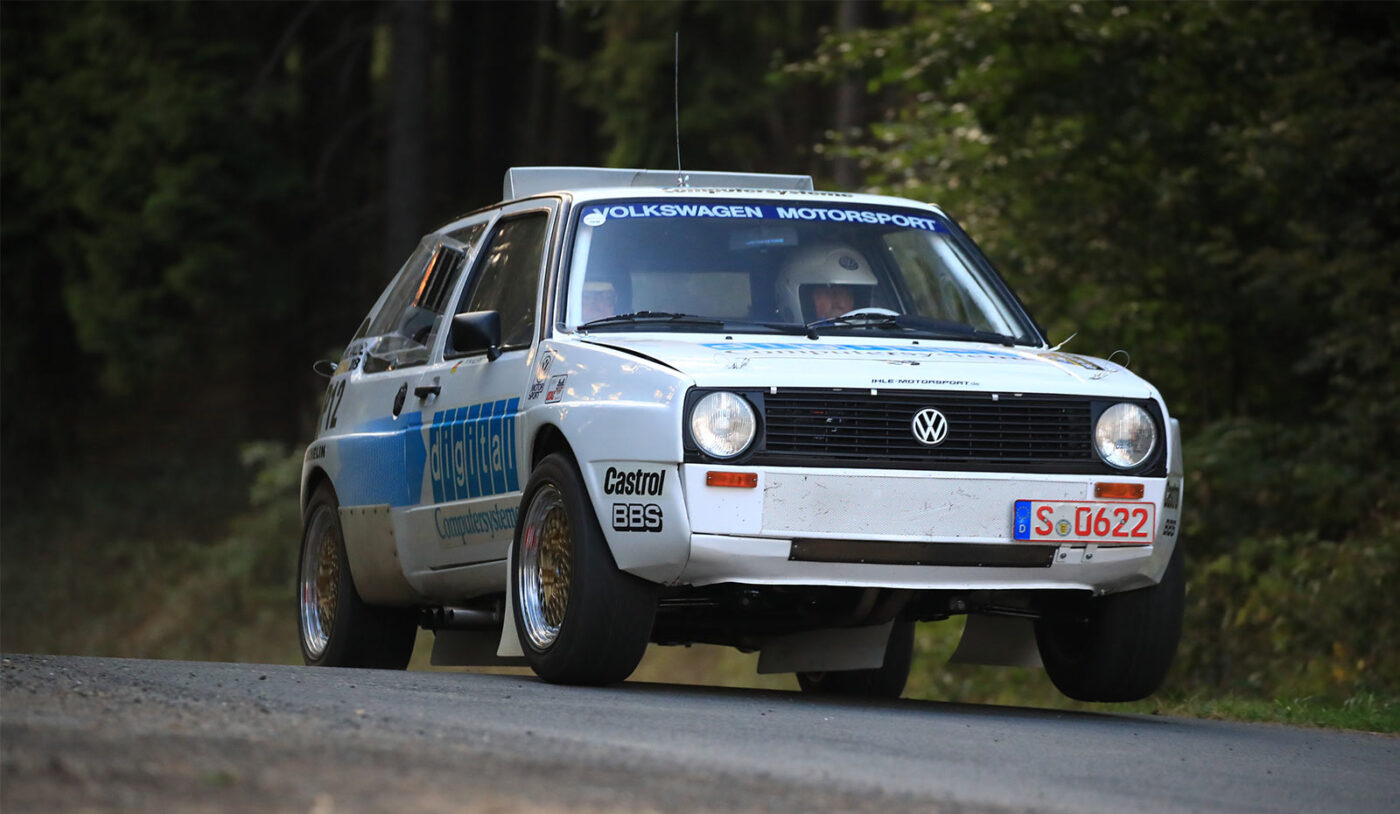
In the first half of the 1980s, Volkswagen Motorsport experimented with vehicles fitted with two engines. First attempts with a VW Jetta and a VW Scirocco were followed by three twin-engine vehicles featuring different technologies for the Pikes Peak International Hill Climb. The first prototype was built with 2 Oettinger 1.8 litre engines and tested on June 20th, 1985 on the Volkswagen test ground in Ehra, just 2 days before the airlift to the United States for the race on July 13th, 1985 in Colorado, USA. But the 2 naturally aspirated engines with 195 hp each lost too much power in the altitude to consider the overall victory. This first attempt ended with European Rally Champion Jochi Kleint driving on 3rd place and the award “Best Rookie”. This was by the way the very first competition event for a four-wheel drive VW motorsport vehicle.
Jochi Kleint and Volkswagen Motorsport came back to Colorado in 1986 with a vehicle which then had two 1.3 l four-cylinder engines. These were taken from the Volkswagen Polo and were increased to 184 kW (250 PS) each by turbochargers. Driver Jochi Kleint got off to a good start in the 19,96 km race on gravel and was performing excellently in the time checks but suffered an electronics problem shortly before the finishing line and ended up in 4th place overall for the very first competition event for a turbo-charged Volkswagen on this July 12th, 1986.
The last shot was 1987 when Volkswagen Motorsport and Jochi Kleint returned with a silhouette vehicle with monocoque chassis looking like a Golf. It was fitted with two 1.8 litre Golf GTI turbo-charged engines which were installed longitudinally. 652 hp were on the level of Walter Röhrl’s Audi Sport quattro S1 Pikes Peak. Jochi Kleint did well with better interim times compared to Walter Röhrl but 4 corners before the finish line a tie rod broke and this meant game over and Audi won.
This car is the original car from 1985 and 1986. The 1986 car was built out of the 1985 vehicle. It was sold by VW Motorsport at the end of the eighties. In 1994 it was sold from a Berlin owner to a collector in Bonn, who drove it only once at the beginning of his 23 years ownership. In 2017 the current owner was able to acquire the car. Following extensive restoration in 2017 and 2018, the hill climber is fully functional once again and will be used occasionally for demonstrations, first with driver Jochi Kleint on Eifel Rallye Festival 2018.
Technical specifications:
Bodywork: Converted and reinforced VW Motorsport body
Roll Cage: Matter
Engines: 2 four-cylinder, eight-valve VW Polo transverse engines
Displacement: 1.291 cc each
Output: 184 kW (250 PS) each at 7.000 rpm
Turbochargers: 1 KKK K24 each with boost between 1.4 und 2.0 bar
Max. torque: 250 Nm each at 6.000 rpm
Lubrification: Dry sump
Drive: Four-wheel drive with one engine per axle
Acceleration: 3,4 seconds from 0 to 100 km/h
Tank Capacity: 40 litre safety tank
Wheels: Three-part BBS E49 in 8J x 16
Tyres: Michelin 225/50 VR 16
Kerb weight: 1,150 kg